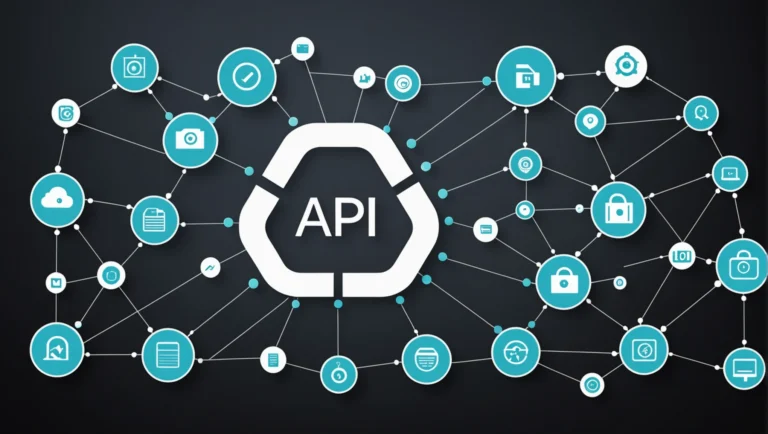Ensuring robust cloud security is paramount for organizations of all sizes. As businesses increasingly rely on cloud services to store and manage their data, the need for customizable solutions to streamline cloud security has never been more critical. This article explores three innovative approaches that empower companies to enhance their cloud security posture while maintaining flexibility and scalability. By leveraging these customizable solutions, businesses can proactively address security challenges, mitigate risks, and safeguard their sensitive information in the cloud. From advanced encryption techniques to automated threat detection mechanisms, these solutions offer a comprehensive framework to fortify cloud environments against evolving cyber threats. Join us on a journey to discover how organizations can tailor their security strategies to meet the unique demands of the cloud era and stay ahead in the ever-changing cybersecurity landscape.
Understanding Cloud Security Challenges
Where businesses are increasingly relying on cloud services to store and manage their data, ensuring the security of cloud environments has become a top priority. However, this task is not without its challenges. Let’s delve into some of the common obstacles faced by businesses when it comes to securing their cloud infrastructure.
Data Breaches and Cyber Attacks
- One of the primary concerns for businesses operating in the cloud is the risk of data breaches and cyber attacks. Hackers are constantly evolving their tactics, making it essential for organizations to stay one step ahead in terms of security measures.
Compliance and Regulatory Requirements
- Many industries have strict compliance and regulatory standards that they must adhere to when it comes to data security. Ensuring that cloud environments meet these requirements can be a complex and time-consuming process.
Lack of Visibility and Control
- With data spread across multiple cloud platforms and services, businesses often struggle to maintain visibility and control over their entire cloud infrastructure. This lack of oversight can leave organizations vulnerable to security threats.
Insider Threats
- While external threats are a significant concern, businesses also need to be wary of insider threats. Malicious or negligent employees can pose a serious risk to the security of cloud data.
Complexity of Multi-Cloud Environments
- Many businesses operate in multi-cloud environments, utilizing services from different cloud providers. Managing security across these diverse platforms can be challenging and requires a comprehensive approach.
Given these challenges, it is clear that businesses need customizable solutions to address their specific security requirements. One-size-fits-all approaches are no longer sufficient in the face of evolving cyber threats. By implementing tailored security measures and staying informed about the latest trends in cloud security, organizations can better protect their valuable data and maintain the trust of their customers and stakeholders.
In addition to the challenges mentioned, businesses also face issues related to encryption key management in the cloud. Proper key management is crucial for maintaining data confidentiality and integrity. Without a robust key management strategy, sensitive information stored in the cloud could be at risk of unauthorized access.
Moreover, the rapid adoption of cloud services has led to a skills gap in cybersecurity. Many organizations struggle to find qualified professionals who can effectively secure their cloud environments. This shortage of skilled personnel poses a significant challenge in implementing robust security measures.
To address these issues, businesses should consider investing in advanced security tools such as intrusion detection systems, encryption technologies, and security information and event management (SIEM) solutions. These tools can help enhance the overall security posture of cloud environments and enable proactive threat detection and response.
Understanding and mitigating cloud security challenges require a proactive and multi-faceted approach. By acknowledging the complexities involved and implementing tailored security solutions, businesses can safeguard their data assets and maintain a strong security posture in the ever-evolving digital landscape.
Customizable Solutions for Streamlining Cloud Security
Ensuring robust security measures for cloud environments is paramount. With the increasing sophistication of cyber threats, organizations need to adopt customizable solutions to enhance their cloud security posture. Let’s explore three key solutions that can help streamline cloud security:.
Solution 1: Multi-Factor Authentication (MFA)
Enhancing Access Control with Multi-Factor Authentication (MFA).
Multi-Factor Authentication (MFA) is a critical security measure that significantly boosts access control and fortifies security measures. By requiring users to provide multiple forms of verification, such as passwords, biometrics, or security tokens, MFA adds an extra layer of protection to user accounts. Organizations can benefit from the enhanced security that MFA offers, reducing the risk of unauthorized access and data breaches. Moreover, the flexibility of MFA implementation allows organizations to tailor security protocols based on their specific needs and risk tolerance levels, ensuring a customized approach to access management.
Solution 2: Encryption Key Management
Safeguarding Sensitive Data through Encryption Key Management.
Encryption key management plays a crucial role in protecting sensitive data stored in the cloud. Effectively managing encryption keys ensures that data remains secure and inaccessible to unauthorized entities. Organizations can customize key policies and access controls, granting them greater authority over data security measures. By implementing robust encryption key management practices, organizations can establish a secure foundation for data protection in the cloud, safeguarding confidential information from potential security breaches.
Solution 3: Security Information and Event Management (SIEM)
Real-Time Monitoring and Threat Detection with Security Information and Event Management (SIEM).
Security Information and Event Management (SIEM) tools are indispensable for monitoring cloud environments in real-time and detecting potential threats. By aggregating and analyzing security data from diverse sources, SIEM solutions empower organizations to promptly identify and respond to security incidents. The scalability and customization features of SIEM tools enable organizations to adapt their security monitoring capabilities to address evolving threats and compliance standards effectively. With real-time monitoring capabilities and advanced threat detection functionalities, SIEM tools provide organizations with the necessary tools to proactively manage security risks and ensure the integrity of their cloud environments.
By leveraging these customizable solutions, organizations can bolster their cloud security posture and effectively mitigate the risks associated with cyber threats. Implementing a combination of MFA, encryption key management, and SIEM tools equips organizations with the necessary resources to secure their cloud environments comprehensively. With a proactive approach to cloud security and the adoption of customizable solutions, organizations can enhance their resilience against evolving cyber threats and safeguard their critical data assets.
Implementing Customizable Solutions
Where cyber threats are constantly evolving, businesses must prioritize implementing customizable security solutions to safeguard their sensitive data and operations. Let’s delve into how organizations can assess their security needs, choose the right solutions, conduct regular security audits and updates, and tailor security measures to fit their specific requirements.
Assessing Security Needs and Choosing the Right Solutions
The first step in enhancing cloud security is to assess the unique security needs of the organization. This involves evaluating the type of data being stored, potential vulnerabilities, compliance requirements, and the level of access control needed. By understanding these factors, businesses can make informed decisions when selecting security solutions that align with their specific needs.
Importance of Regular Security Audits and Updates
Maintaining robust cloud security requires more than just implementing security measures; it also involves conducting regular security audits and updates. Security audits help identify potential weaknesses in the existing security infrastructure, allowing businesses to proactively address vulnerabilities before they are exploited. Similarly, staying up-to-date with security updates ensures that the organization is protected against the latest threats and vulnerabilities.
Benefits of Tailoring Security Solutions
While off-the-shelf security solutions offer a level of protection, tailoring security measures to fit specific organizational requirements can provide enhanced security and efficiency. Customizable security solutions allow businesses to address their unique challenges and compliance needs effectively. By tailoring security solutions, organizations can optimize their security posture, improve incident response capabilities, and ensure seamless integration with existing systems.
Implementing customizable security solutions is essential for businesses looking to enhance their cloud security posture. By assessing security needs, choosing the right solutions, conducting regular audits and updates, and tailoring security measures, organizations can build a robust security framework that effectively mitigates cyber risks and safeguards critical assets.
Enhancing Data Privacy and Compliance
In addition to securing data, businesses must also focus on enhancing data privacy and compliance with regulations such as GDPR, HIPAA, or PCI DSS. Implementing customizable security solutions that include encryption protocols, access controls, and data anonymization techniques can help organizations meet regulatory requirements and protect sensitive information from unauthorized access.
Embracing Automation for Security Operations
Automation plays a crucial role in strengthening cloud security by enabling rapid threat detection, response, and remediation. Businesses can leverage automation tools for tasks like security incident response, log monitoring, and vulnerability assessments to enhance their overall security posture. By automating routine security processes, organizations can improve efficiency, reduce human error, and respond to security incidents more effectively.
Building a Culture of Security Awareness
Beyond technology solutions, fostering a culture of security awareness among employees is vital for maintaining a strong security posture. Training programs, simulated phishing exercises, and regular security awareness campaigns can help educate employees about cybersecurity best practices, the importance of data protection, and how to recognize and report security incidents. By empowering employees to be proactive in identifying and mitigating security risks, businesses can create a human firewall that complements technical security measures.
Continuous Monitoring and Incident Response
Effective cloud security requires continuous monitoring of network traffic, system logs, and user activities to detect and respond to security incidents in real-time. Implementing customizable security solutions that include intrusion detection systems, security information and event management (SIEM) tools, and incident response protocols can help organizations identify and mitigate security threats promptly. By establishing a robust incident response plan and conducting regular security drills, businesses can minimize the impact of security breaches and ensure business continuity.
Conclusion
Implementing customizable security solutions tailored to the specific needs of the organization is crucial for maintaining a strong cloud security posture. By assessing security needs, choosing the right solutions, conducting regular audits and updates, and embracing a holistic approach to security that includes data privacy, automation, security awareness, and incident response, businesses can effectively mitigate cyber risks and protect their critical assets in the digital age.
Conclusion
Implementing customizable solutions for streamlining cloud security is essential in today’s digital landscape. By tailoring security measures to fit specific needs and requirements, organizations can enhance their overall security posture and better protect their sensitive data and assets in the cloud. It is crucial for businesses to stay proactive, continuously assess their security strategies, and leverage customizable solutions to stay ahead of potential threats and vulnerabilities. Embracing a dynamic and adaptable approach to cloud security will ultimately lead to a more robust and resilient security framework for any organization operating in the cloud.








